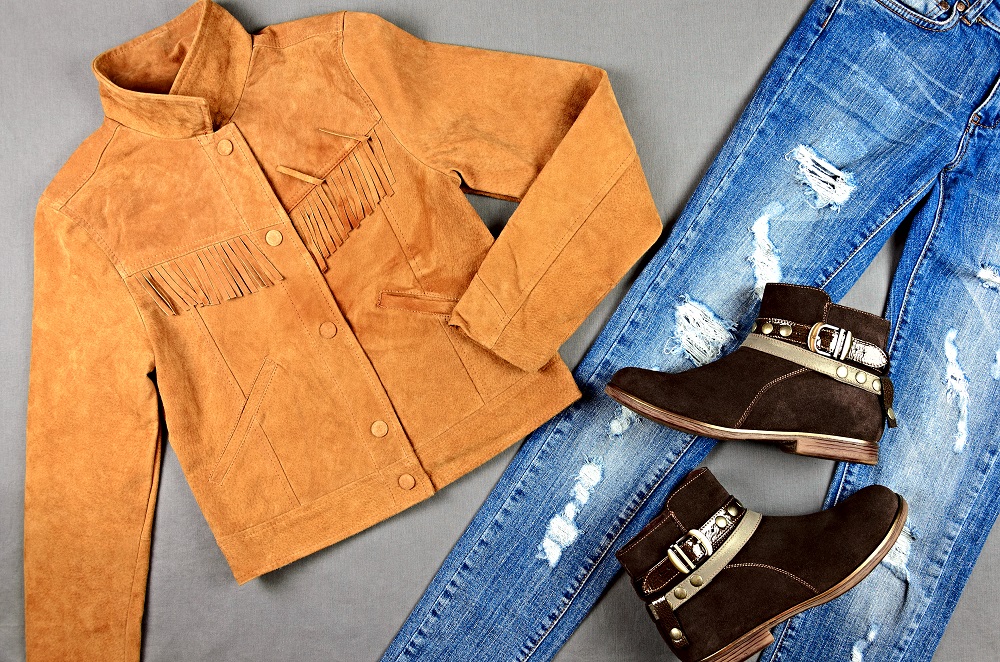Differences Between Ultrasuede and Suede
Ultrasuede is the trade name for faux suede made with synthetic materials instead of animal hides. This is the first and most popular brand of faux suede which is why a lot of people tend to use both interchangeably. Ultrasuede and suede are typically two different materials.
However, some consumers may be confused about them. Understanding the differences between ultrasuede fabric and suede will help you make an informed decision when shopping for this type of fabric. This is why we have written this article to discuss the differences between both fabrics by considering different aspects of them.
Material
Suede is leather made from animal hides. It is primarily obtained from animals like calf, lamb, and goat. Because it is gotten from the hide’s underside, its texture is soft and somewhat velvety making it suitable for interior and fashion uses.
Ultrasuede on the other hand is a man-made imitation of suede. It is made with synthetic materials such as polyurethane or polyester. Because of how advanced its production is, this fabric mimics suede’s texture and appearance so much that an uninformed person may be unable to distinguish them.
Production Process
The production process of both fabrics is also very different. The genuine material involves tanning whereby the animal hides will have to undergo several chemical treatments to give it the desired texture. The surface imperfections and natural grain are often retained to make the material look and feel more luxurious and unique.
On the other hand, the production process of the synthetic version is more chemical. Synthetic materials would be bonded and woven together to create the fabric. With the specialized process, manufacturers can condition synthetic materials to imitate the real thing.
Texture
Both materials have a soft velvety texture since the Ultrasuede is made to mimic the real thing. However, Ultrasuede as a synthetic version does not have the imperfections the genuine version has because of its natural grain. Because it is synthetic, this version has a consistent grain pattern such that even when mass-produced, it maintains a uniform look. Genuine suede’s texture on the flip side is unique and has more character and depth.
Eco-Friendliness
Both fabrics have their upsides and downsides when it comes to how eco-friendly they are. Ultrasuede does not involve the use of animal hides which makes it a good option for vegans and people concerned with animal welfare. You can visit https://study.com/ to learn more about animal welfare. However, this option isn’t exactly eco-friendly because of its production process.
Also, the materials used are petroleum-based which means their disposal can negatively impact the environment. Genuine suede on the other hand is biodegradable so it is eco-friendly in this sense. At the same time, its production process which involves some chemicals is also not quite great for the environment. Not to mention the fact that animals have to be killed to get the raw material for it.

Appearance
The advanced techniques used in the manufacturing process of Ultrasuede make it look like real suede. However, because of the natural grain of real suede, its appearance tends to change over time. As it ages, it develops a more unique look that makes it more aesthetically pleasing. Ultrasuede, despite its advanced production cannot replicate this.
Durability
Ultrasuede isn’t as durable as genuine suede. This is because its synthetic material is more prone to peel and fray over time. The fabric’s bonding may also weaken with time, making it less durable. Real suede on the other hand is known to be very durable and resistant to damage and abrasion.
Cost
As you can guess, the synthetic version is relatively cheaper than the real thing. This is mainly because it is cheaper to produce. So, what Ultrasuede loses in durability, it makes up for it with its affordability.
Maintenance and Care
Maintaining Ultrasuede is relatively easier. This is because the Ultrasuede’s fibers are more water and stain resistant making it easier to clean the material. The natural version, however, requires delicate care as it can easily get stained. You’ll need specialized products and brushes to properly maintain it and you also need to regularly condition it to ensure it maintains its texture.
Allergenic Potential
Ultrasuede is typically hypoallergenic. Its synthetic material will likely not cause any allergic reactions. This makes it a great choice for people with allergies or sensitive skin.
Genuine suede on the flip side may cause an allergic reaction for people with leather allergy; you can check here to learn more about leather allergy. This is especially true if the leather was tanned using DMF.
Aside from this, the animal hide used may contain some proteins that some people could be sensitive to. This may then cause allergic reactions or skin irritation. Although, the likelihood of this happening is pretty rare.
Conclusion
Differentiating between Ultrasuede and real suede shouldn’t be difficult. If the price does not tip you off, then the texture should. Even though Ultrasuede is made to imitate the real thing very closely, the natural grains of real suede should give it away.

